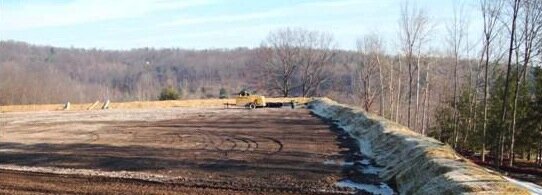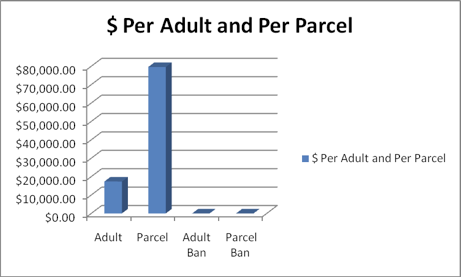WASHINGTON — The Obama administration’s 2012 budget proposal will include a request for money to help develop small “modular” reactors that would be owned by a utility and would supply electricity to a government lab, people involved in the effort say.
The department is hoping for $500 million over five years, half of the estimated cost to complete two designs and secure the Nuclear Regulatory Commission’s approval. The reactors would be built almost entirely in a factory and trucked to a site like modular homes.
In promoting the reactor, the administration’s immediate goal is to help the Energy Department meet a federal target for reducing its carbon dioxide emissions by relying more on clean energy and less on gasand coal. Like other federal agencies, the department is required by an executive order to reduce its carbon footprint by 28 percent by 2020.
Yet the longer-term goal is to foster assembly-line production of the small reactors at a far lower cost than construction of conventional reactors. The reactors could even replace old coal-fired power plants that are threatened by new federal emissions rules and sit on sites that already have grid connections and cooling water.
The costs of construction would range from a few hundred million dollars to $2 billion, as opposed to the current price tag of up to $10 billion for a twin-unit nuclear complex, which has an output 20 times larger than that expected for a modular reactor.
A leading candidate to receive electricity from such a project is the Oak Ridge National Laboratory in Tennessee, run by the Energy Department and served by the Tennessee Valley Authority.
Last year, the Energy Department asked for enough money to halve the cost of licensing a new design with a company that would be chosen later. But Congress never passed a 2011 budget for the Energy Department, instead approving a so-called continuing resolution, which finances old programs based on the previous year’s appropriations. The modular reactor program had no prior appropriation.
This year, the administration is again asking for that money in addition to financing to begin actually developing the reactor. The details of the proposal will not be formally released until Monday, when the Obama administration issues its budget request for the fiscal year that begins on Oct. 1. But several people involved in the proposal agreed to describe it on the condition of anonymity.
Whether Congress will agree to the idea remains uncertain, particularly in a tough budget year. Last year, the House and Senate appropriations committees were sympathetic, even approving more than requested.
Various experts have championed modular reactors as a way for utilities in the United States and other countries to harness nuclear power in an era when the cost of a conventional project has become dauntingly large.
Advocates say the modules can be built inexpensively and with good quality control in a central factory and then set up quickly where they are needed. But the $500 million cost of the design and approval process, steep for a product with uncertain market appeal, is a major barrier.
The Energy Department’s notion is that if the government provides half the money up front and signs a contract to buy power from the reactor, a utility will be persuaded to order one. That contract, because it guarantees revenue for the utility company, would make it easier for the utility to receive financing.
Military bases, which also must reduce their carbon footprint 28 percent, could sign such contracts as well, Energy Department officials say. Each power purchase agreement would be negotiated at a favorable rate, compensating the Energy Department for its investment.
If Congress approves, the Energy Department will invite companies to apply for help. At least four companies could potentially build such a reactor. One is Babcock & Wilcox, which builds reactors for nuclear submarines whose power output is more similar to the proposed reactors than to full-size reactors.
The company is trying to build interest in a modular reactor called mPower. It puts into a single package many components that for conventional reactors must be shipped to a site separatelyand then assembled.
Another possible builder is NuScale, which is trying to commercialize a design developed at Oregon State University.
The department also anticipates applications from Westinghouse, which builds reactors, and Holtec, which now makes nuclear equipment.
Experts at the Energy Department and elsewhere suggest that a small reactor could be built in an advanced factory in the United States and delivered across the globe to replace coal-fired power plants.
What is more, the modular reactors would provide about the same power output as coal plants that were built in the United States in the 1950s and 1960s and are now ready for retirement, planners say.
Still, the actual cost and reliability of modular reactors remains uncertain.
There are other unknowns that are likely to raise questions from the Nuclear Regulatory Commission. Rules for control-room staffing, security and even calculation of license fees are all based on big reactors and may not be appropriate to small ones, commission officials say.
“We may want to modify our regulations to make them a little more tailored to the uniqueness of these design types,” the commission’s chairman, Gregory B. Jaczko, told reporters on Feb. 2 at a discussion hosted by Platts, the energy information company.
Smaller reactors present some advantages and some drawbacks, said David Lochbaum, a nuclear expert at the Union of Concerned Scientists, which generally opposes nuclear power.
Mr. Lochbaum said that reactors of 1,000 or 1,500 megawatts, the output of traditional reactors, are so big that it has been difficult to match them to anticipated demand. “Either you build it early, and like ‘Field of Dreams,’ you hope the customers come, or you’re short by 1,000 or 1,500 megawatts and you hope nobody notices while you’re building your plant,” he said.
But since the attacks of Sept. 11, 2001, he said, all plants have had to bolster security and keep control room operators and maintenance staff on duty, increasing overhead costs to produce a relatively small amount of energy. And the cost to build small reactors is uncertain.
Some utilities are interested nonetheless. The Tennessee Valley Authority has publicly discussed the idea of placing several small modular reactors on a site adjacent to the Clinch River just outside Oak Ridge, Tenn., where 30 years ago the government tried to build a breeder reactor, which would have produced more fuel than it consumes. That site could supply power to the government’s Oak Ridge National Laboratory, some experts say.
“There’s not much not to like about that project,” said one government scientist involved in the modular reactor program.
Obama Administration Pushes for Small ‘Modular’ Reactors
Submitted by admin on Tue, 10/18/2011 - 15:08
Note from DSEC: The following article details how the Obama administration is pushing for a nuclear alternative.
At the New York Times:
- Log in to post comments





